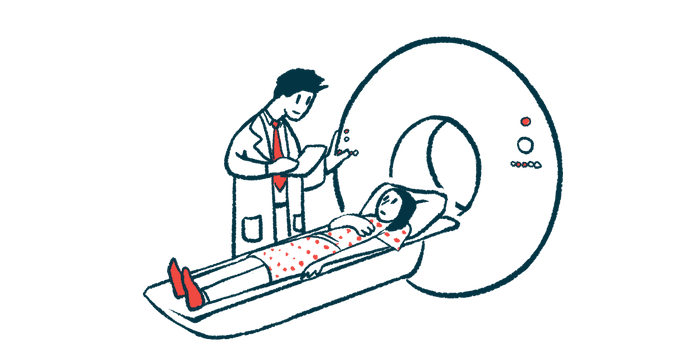Problems in sensory processing with FA evident on MRI scans
Study supports disease-related deficit in processing of movement and location

MRI imaging indicates that Friedreich’s ataxia (FA) patients have impairments in proprioception — sensory processing related to body movement and location — relative to healthy adults, but these changes do not contribute to overall disease severity, according to recent research.
Brain responses to tactile stimulation (light touch) were similar between people with FA and those without it, but the scientists believe that tactile deficits may become more clinically relevant as patients age.
“Our study captured the difference between tactile and proprioceptive impairments in FA,” they wrote in “Proprioceptive and tactile processing in individuals with Friedreich ataxia: an fMRI study,” published in the journal Frontiers in Neurology.
Problems with sensory processing noted in Friedreich’s ataxia research
In FA, mutations in the FXN gene lead to a lack of frataxin, a protein important for cellular energy production. Nerve cells and muscles, which have high energetic needs, are particularly vulnerable to this deficiency.
The hallmark FA symptom is ataxia, or a lack of muscle coordination and control, which commonly manifests as problems with walking. Ataxia may be related to the loss of nerve cells in certain areas of the spinal cord and dysfunction in the brain’s cerebellum, which is important for coordination.
Nerve cells that communicate with the brain’s somatosensory cortex also are found to be affected in FA, but the clinical relevance of these changes are not as clear. This part of the brain is involved in processing information related to sensations such as touch, pain, temperature, and proprioception.
Problems in proprioception have been observed in FA. It’s been proposed that this could cause afferent ataxia, a type of ataxia that contributes to greater overall disease severity, but this is not well established.
Other types of sensory deficits also may significantly impact daily life for FA patients. For example, tactile sensations in the hands facilitate the ability to reach out and grip objects.
“This is an important issue, especially in the hands, which are crucial for maintaining the autonomy of individuals with FA who will become wheelchair bound,” the scientists noted.
Functional MRI (fMRI) scans, which look at brain activation during particular behaviors or states, could help in understanding how the somatosensory cortex is altered in FA, and what, if any, effects these alterations have on somatosensory function and overall FA severity.
The study’s 20 FA patients and 20 healthy adults (a control group) underwent fMRI scans while undergoing two different evaluations of somatosensory function. The patients, 11 women and nine men, had a mean age of 32.6.
Severity of disease symptoms not tied to proprioception deficits
Tactile processing was evaluated using the tactile oddball paradigm, which involved stimulating the fingertips. For proprioceptive processing, a test called the passive movement paradigm was used, which involves an artificial muscle stimulator to induce a flexing of the finger muscles.
Results showed that both led to significant increases in activation of the primary and secondary somatosensory cortices of FA patients and controls. The primary region receives sensory information, and requires the secondary region to store and process it.
Still, both the primary and secondary somatosensory cortices were less active in FA patients compared to healthy people during the proprioception test, suggesting proprioception impairments. No significant differences between these groups were observed during the tactile paradigm.
Disease severity in FA patients was evaluated on the same day as the fMRI scans using the Scale for the Assessment and Rating of Ataxia (SARA). A significant correlation was seen between primary somatosensory cortex activation and SARA scores during the tactile test, with greater brain activation associated with higher clinical disability.
In contrast, no association was found during the proprioceptive task between brain activation and disease severity, which “supports a low contribution of afferent ataxia to clinical severity in FA,” the researchers wrote.
Notably, the range of tactile impairments in FA were similar to those previously observed in healthy older adults. The scientists suggested that while these alterations might not be clinically relevant for patients as younger adults, progressive losses over time could cause more significant impairments with age, warranting long-term studies.
“Somatosensory fMRI paradigms could prove to be important tools in longitudinal studies assessing how age, FA, and disease duration could potentiate each other in making tactile perception loss clinically relevant,” the team concluded.







